It’s spring, which is the best time for my woodland native plant garden. We live on a steep slope (50′ of elevation change over a 150′ run!) and part of it (the area on the right) gets a bit of direct sun from mid-morning into the early afternoon. The low-quality soil, destroyed by construction and decades of neglect had been planted with invasive Berberis thunbergii (Japanese barberry) bushes and Pachysandra terminalis (Japanese pachysandra) groundcover. This is our house in 2011, when we bought it. It’s a remarkably unappealing view. The house itself looks rather sad, with a terrible DIY attempt at obliterating the rare mahogany siding with solid stain and an ill-chosen salmon base above a bare red stone gravel bed.
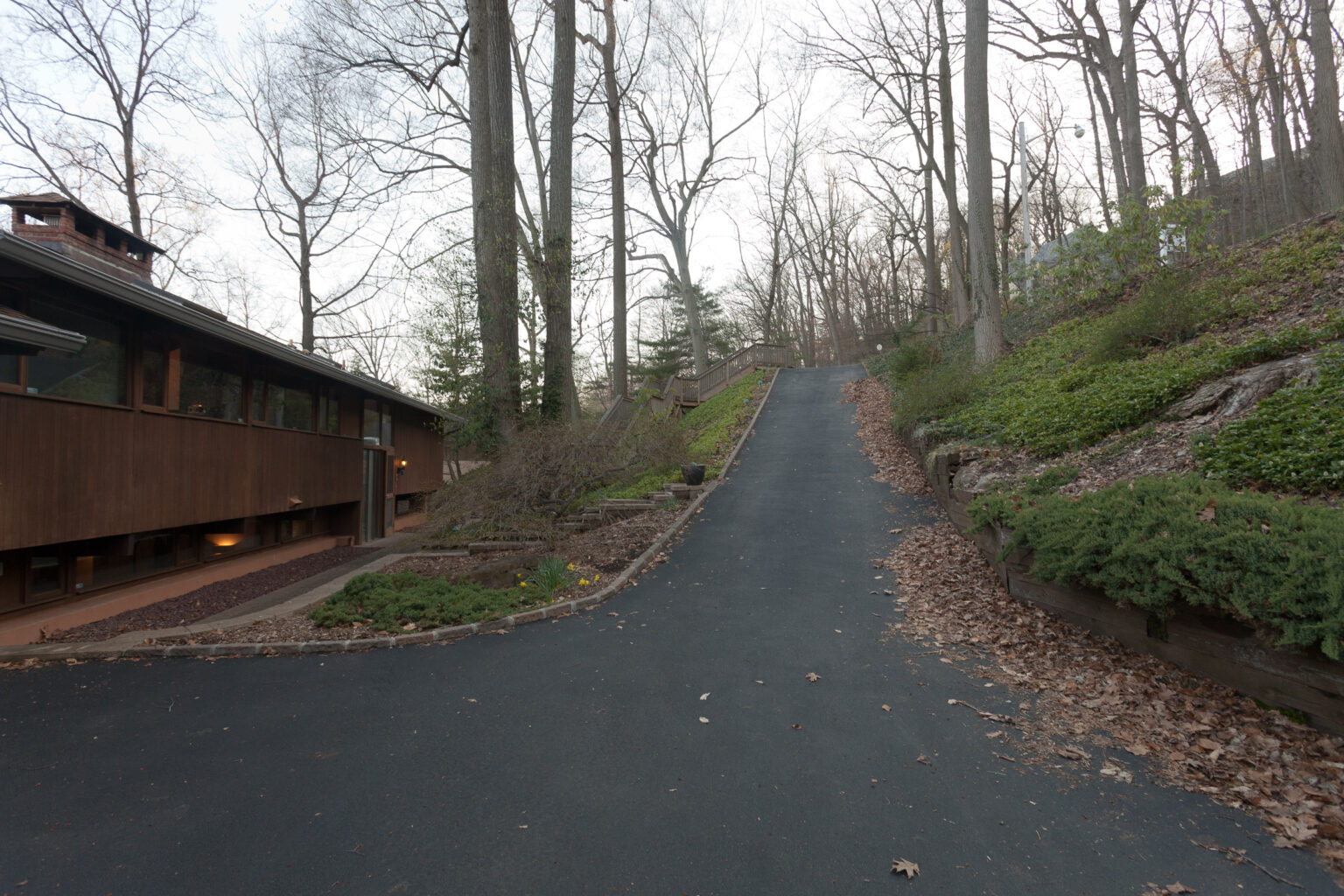
The pachysandra largely died out during a blight and, not knowing what I was doing, I transplanted Vinca minor (Periwinkle) from elsewhere on the property to replace it. As I began to learn more about the importance of using native plants, I began planting woodland ephemerals in shady spots. Leaving the leaves and breaking up smaller sticks and twigs to decay where they fell has done a remarkable amount to revive my soil. Plants have about twice as a high a survival rate as they did just five years ago. My technique has something to do with this, but I suspect that beneficial mycorrhizae created by the decaying plant matter has a lot to do with it. In a woodland condition, scientists consider the top layer of soil to start at the ‘litter layer’ or O horizon.
In other words, don’t let contractors destroy your property by “landscraping” like you see on the left. This is really bad. It looks stupid and, with the top layer of forest soil literally stripped away, the humus-rich topsoil will dry up and blow off in the wind, exposing subsoil in a matter of years.
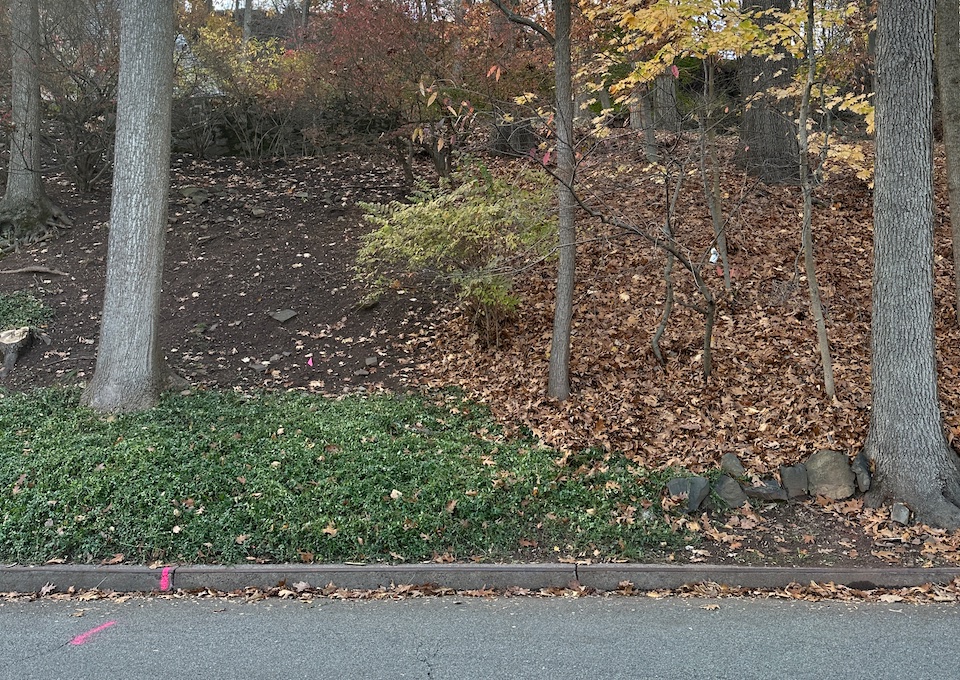
Over under the eaves of the house, we replaced the dead zone of rock with soil that we filled with Mertensia virginica (Virginia bluebells) and Dennstaedtia punctiluba (Hay-scented fern). The idea is that the hay-scented fern will form a dense mat in the middle of the summer. It’s not a great native plant, as it will create a thick monoculture that doesn’t perform any real ecosystem services for insects or other animals, but as we have a half-acre (0.2 hectares), there’s plenty of room for that elsewhere. The bluebells provide an early burst of interest, before the ferns come out in May and melt away by June.
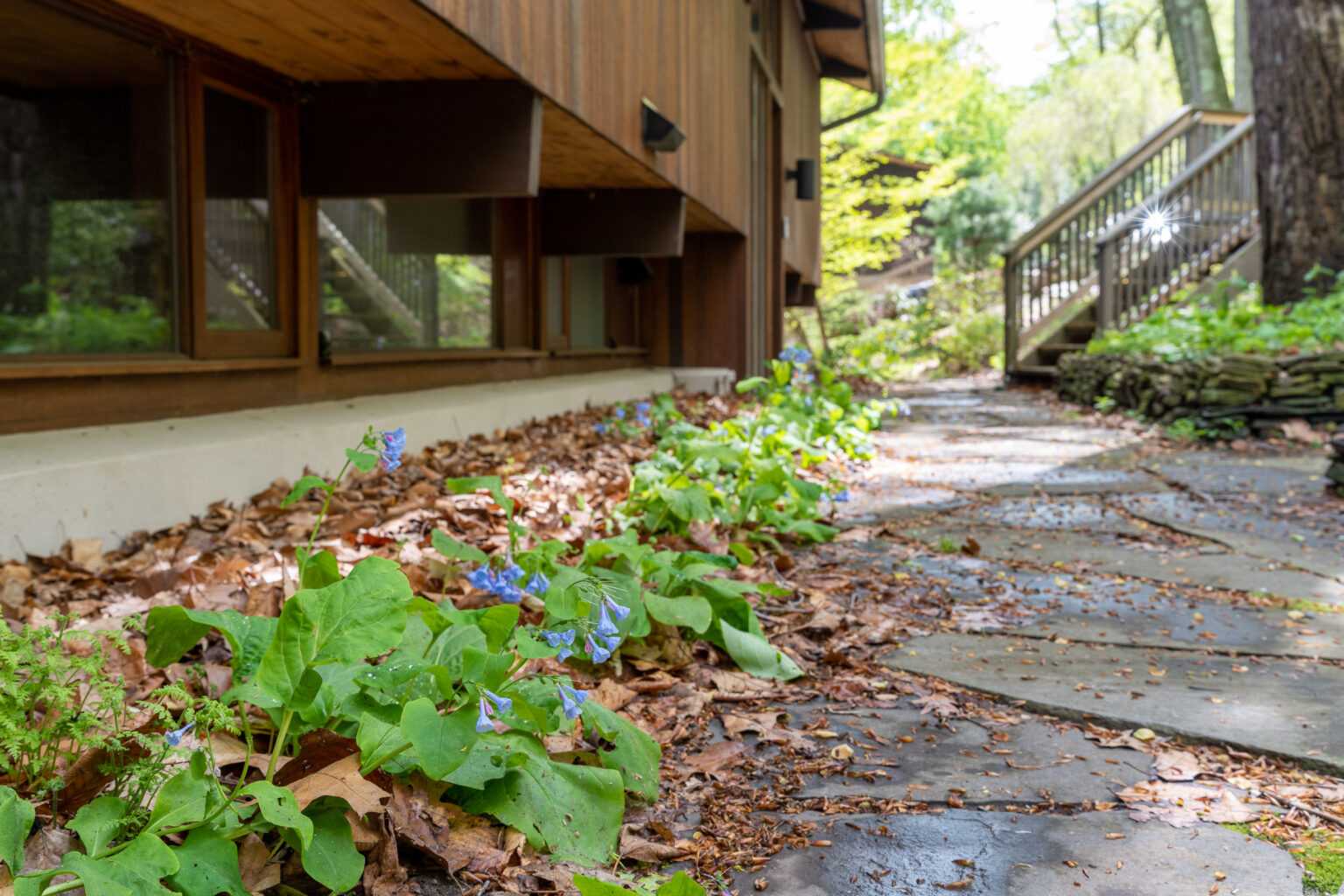
I suppose it’s worth noting that we have stripped the solid stain off the mahogany façade, applied Proluxe PPG 1-2/3 (in Butternut) and painted the foundation Annapolis Gray. Also, the engineered stone landscaping has been replaced by more natural bluestone paving that I am encouraging moss to grow between (there’s nice little patch starting to the right). The layer of leaf litter only improves the soil and means there is so much less work to do than endlessly blowing out debris from the ugly rocks. Camera buffs will see that it didn’t take long for the Tamron E 35-150 to produce it’s well-known lens flare.
Back to the hillside. Again, this area gets a bit of sun and can be quite hot and dry in the middle of the summer. That said, who is to say that it isn’t the kind of exposed alpine hillside you might see on a mountaintop nearby? In response, starting in 2021, I created a matrix of native plants that has done quite well so far.
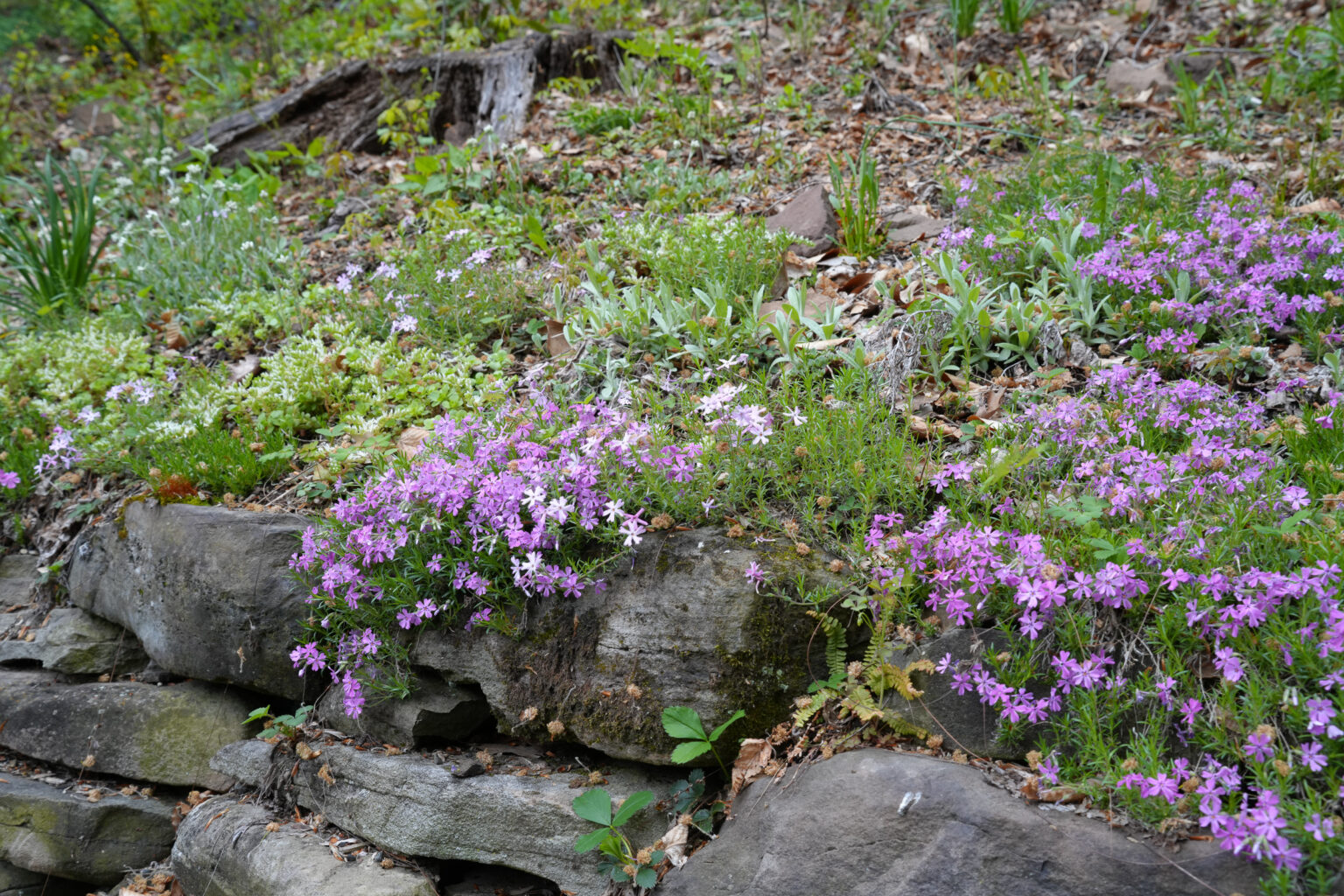
The dominant plant in bloom here is Phlox subulata (Moss Phlox), although there is some Phlox stolonifera (Creeping Phlox) in there as well, which has thrived and expanded down into the stone wall that we built in the fall of 2020. Phlox subulata tolerates full sun and hot, dry conditions well and is typically found in dry, sandy or rocky soils. A lot of gardeners, wedded to outdated ways, try to create thick monoculture carpets of this stuff. That’s not a good idea. First, it means that any spot that it doesn’t like to grown in will be unsightly. Second, it is incredibly boring. Many perennials move around, expanding in one area, dying off in another. Instead of endlessly trying to amend and replant, a more modern approach would be to use the concept of “green mulch” developed by Thomas Rainer. Here is an example from Mt. Cuba Center in April 2022:
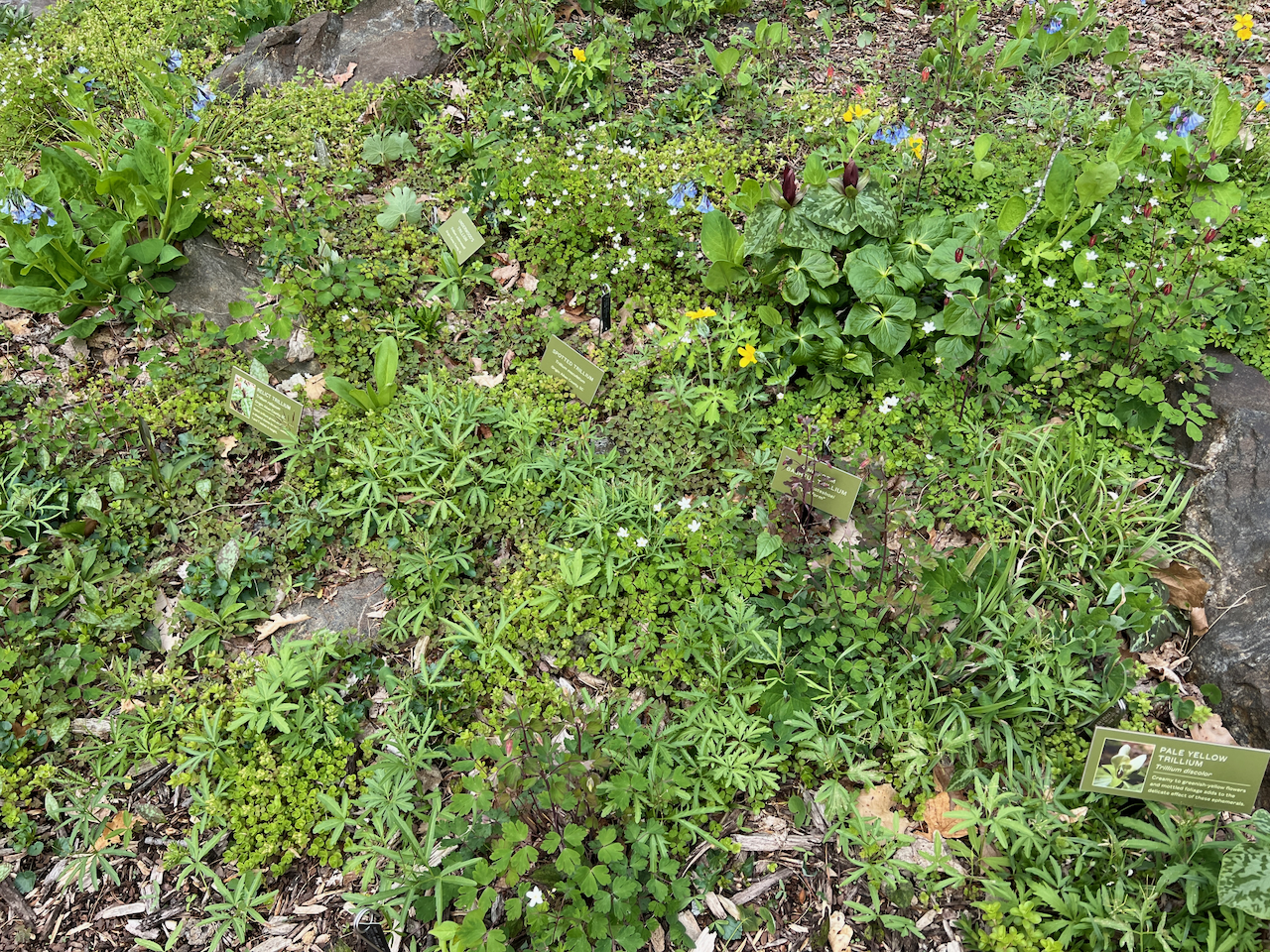
Here the plants form a dense mat. It’s so much more interesting than the dull monoculture of pachysandra, vinca, or worse yet, mulch that people grow on their properties. And don’t get me started on grass. First, not only is this area too steep and dangerous to mow, but that is the most boring and high maintenance groundcover of all, useful only for high-traffic areas that will be used for sports, dining, or other domestic activities.
Seeking a green mulch for the hillside, I have complimented the Phlox subulata with other natives: Fragraria virginia (Wild Strawberry), Antennaria Neglecta (Field Pussytoes), Antennaria plantagnifolia, (Lady Tobacco), Quilegia canadensis, Wild Columbine, and Sedum Ternatum (Woodland Stonecrop). You can also see an Asplenium platyneuron (Ebony Spleenwort) that I’ve planted into a crevice in the rock wall. There are other plants that will grow in during the season, such as Parthenocissus quinquefolia (Virginia Creeper), a wonderful native vine that can be found for free on my property.
Fragaria virginia is a great groundcover, although there certainly can be large gaps between each plant, so it works well in this context and is happy colonizing the wall. Quilegia canadensis shoots up over the moss and seems quite happy that way. It seems that it’s goal is to colonize the wall and particularly the place at which the wall and the driveway meet.
The Antennarias are strange looking plants, from the Asteraceae family but unlike any asters I know of. They are larval food hosts for the American Painted Lady butterfly, which is fine by me. The leaves are a very light green, with white elements and the blooms, which are supposed to resemble cat toes.
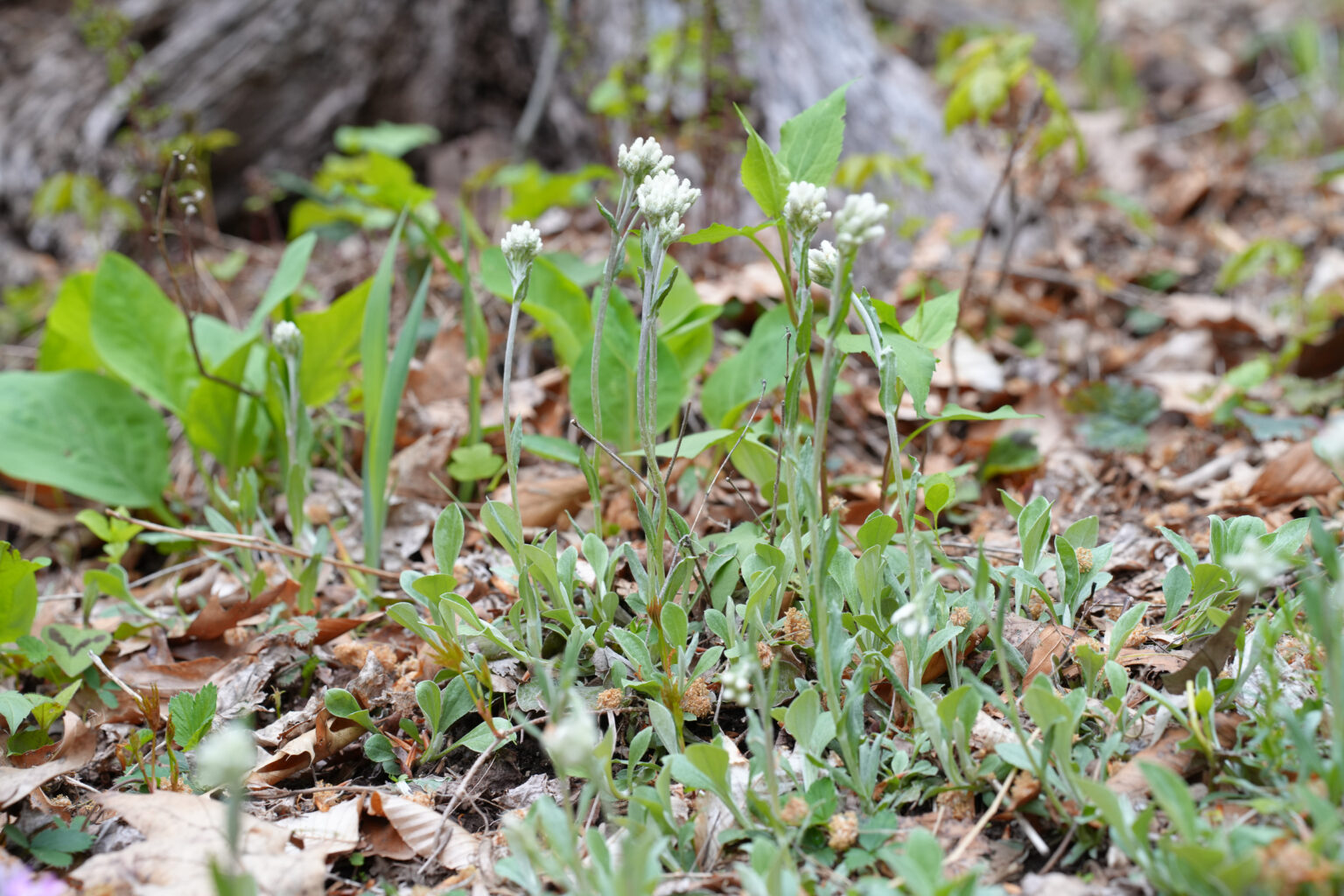
There are more Mertensia virginica in the background. Note that the leaf litter compliments the plants visually, forming a background to the living matrix.
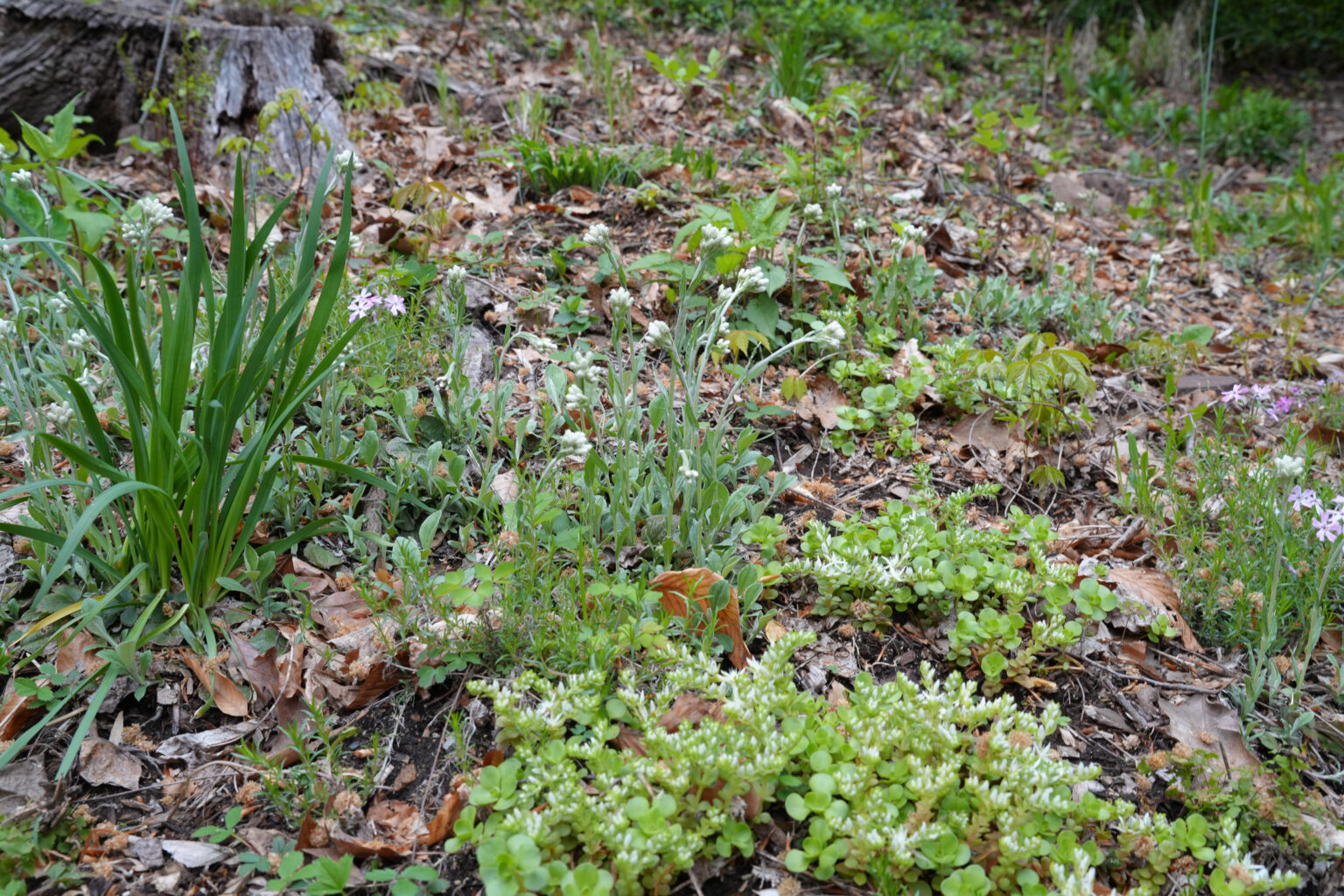
In this view, you can see the Sedum, another strange plant. It’s a succulent native to the Northeastern United States. It’s a delight to grow since once a stem breaks, it usually just roots in place. It’s not supposed to like sunny, dry slopes, but it seems to prefer this area to more shaded areas. You take your chances with plants. The only plant that I have tried planting here and have apparently failed with is Saxifraga virginiensis (Early Saxifrage and why on earth are there three separate specific epithets virginiensis, virginica, and virginiana all meaning the same thing?). Over on the left is an Allium cernuum, or Nodding onion, which will provide a spectacular display later in the year. Many of these plants—the Phlox, Sedum and Antennaria are evergreen—or at least are in part, so
One last thing, in 2021, I covered this area with arborist woodchips. This is a near-miraculous mulch and one of the few worth using. Arborist woodchips are the remnants of smaller branches, often with leaves, processed through a wood chipper. Arborist woodchips are ugly, but they are free (just ask any arborist and they will gladly drop them off) and the rapidly rotting material quickly adds mycorrhizae to the soil. Luckily, they remain unsightly for only a brief period of time, until they turn color. Maybe best to put them down in late summer when you go on vacation and before leaves fall?
The hillside matrix gives me pleasure to view daily. It’s still early in this process and it will be interesting to see what happens over the years as the area evolves.